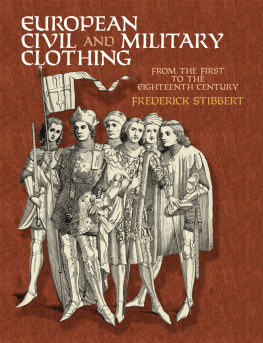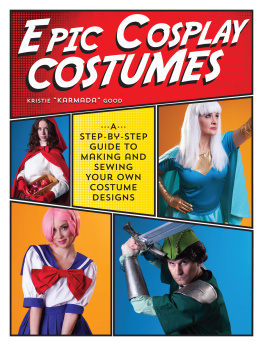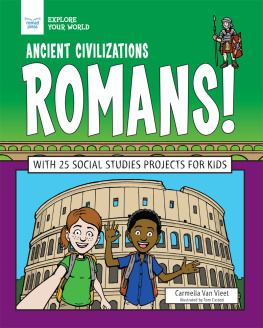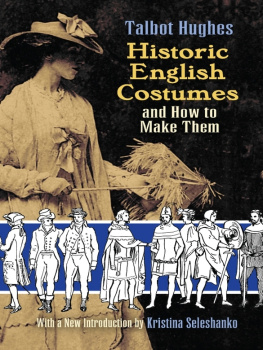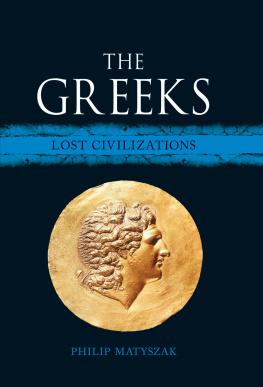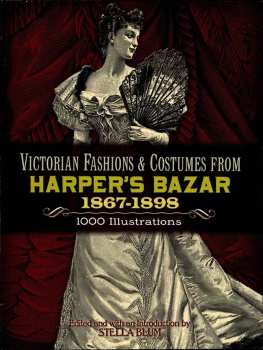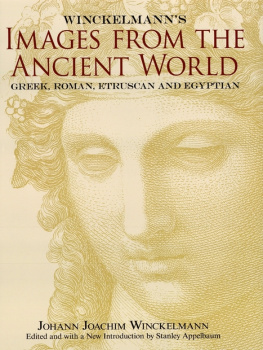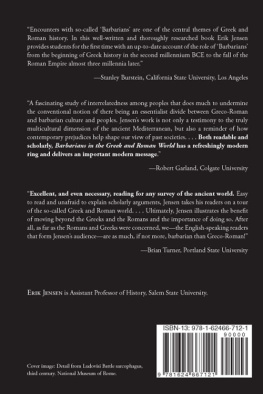DOVER BOOKS ON FASHION
ACKERMANNS COSTUME PLATES, Rudolph Ackermann. (0-486-23690-0)
ALTMANS SPRING AND SUMMER FASHIONS CATALOG, 1915, B. Altman & Co. (0-486-28527-8)
BRITISH COSTUME FROM EARLIEST TIMES TO 1820: WITH 468 ILLUSTRATIONS, Mrs. Charles H. Ashdown. (0-486-41813-8)
EIGHTEENTH-CENTURY FRENCH FASHION PLATES IN FULL COLOR, Stella Blum (ed.). (0-486-24331-1)
EVERYDAY FASHIONS OF THE THIRTIES AS PICTURED IN SEARS CATALOGS, Stella Blum (ed.). (0-486-25108-X)
EVERYDAY FASHIONS OF THE TWENTIES AS PICTURED IN SEARS AND OTHER CATALOGS, Stella Blum. (0-486-24134-3)
FASHIONS AND COSTUMES FROM GODEYS LADYS BOOK, Stella Blum (ed.). (0-486-24841-0)
PARIS FASHIONS OF THE 1890s: A PICTURE SOURCEBOOK, Stella Blum (ed.). (0-486-24534-9)
VICTORIAN FASHIONS AND COSTUMES FROM HARPERS BAZAR, 18671898, Stella Blum. (0-486-22990-4)
WESTERN WORLD COSTUME: AN OUTLINE HISTORY, Carolyn G. Bradley. (0-486-41986-X)
HISTORIC COSTUME IN PICTURES, Braun and Schneider. (0-486-23150-X)
ENGLISH CHILDRENS COSTUME 17751920, Iris Brooke. (0-486-42984-9)
AMERICAN DRESS PATTERN CATALOGS, 18731909, Nancy Bryk. (0-486-25654-5)
ENGLISH WOMENS CLOTHING IN THE NINETEENTH CENTURY, C. Willett Cunnington. (0-486-26323-1)
FASHION AND WOMENS ATTITUDES IN THE NINETEENTH CENTURY, C. Willett Cunnington. (0-486-43190-8)
HISTORY OF UNDERCLOTHES, C. Willett Cunnington & Phyllis Cunnington. (0-486-27124-2)
AMERICAN VICTORIAN COSTUME IN EARLY PHOTOGRAPHS, Priscilla Harris Dalrymple. (0-486-26533-1)
DESIGNS BY ERT; FASHION DRAWINGS AND ILLUSTRATIONS FROM HARPERS BAZAR, Ert. (0-486-23397-9)
ERTS FASHION DESIGNS, Ert. (0-486-24203-X)
ERTS THEATRICAL COSTUMES IN FULL COLOR, Ert. (0-486-23813-X)
FRANKLIN SIMON FASHION CATALOG FOR 1923, Franklin Simon & Co. (0-486-27854-9)
VICTORIAN AND EDWARDIAN FASHION, Alison Gernsheim. (0-486-24205-6)
WHAT PEOPLE WORE, Douglas Gorsline. (Available in U.S. only.) (0-486-28162-0)
Paperbound unless otherwise indicated. Available at your book dealer, online at www.doverpublications.com, or by writing to Dept. 23, Dover Publications, Inc., 31 East 2nd Street, Mineola, NY 11501. For current price information or for free catalogs (please indicate field of interest), write to Dover Publications or log on to www.doverpublications.com and see every Dover book in print. Each year Dover publishes over 500 books on fine art, music, crafts and needlework, antiques, languages, literature, childrens books, chess, cookery, nature, anthropology, science, mathematics, and other areas.
Manufactured in the U.S.A.
two volumes bound as one
( formerly titled: Costume of the Ancients )
This Dover edition, first published in 1962, is an unabridged republication of the work originally published by William Miller in 1812 under the title Costume of the Ancients . The work previously appeared in two volumes, but this Dover edition is complete in one volume.
This book belongs to the Dover Pictorial Archive Series. You may use the designs and illustrations for graphics and crafts applications, free and without special permission, provided that you include no more than ten in the same publication or project. (For permission for additional use, please write to: Permissions Department, Dover Publications, Inc., 180 Varick Street, New York, N.Y. 10014.)
However, republication or reproduction of any illustration by any other graphic service, whether it be in a book or in any other design resource, is strictly prohibited.
9780486137315
Manufactured in the United States of America
Dover Publications, Inc.
31 East 2nd Street
Mineola, N.Y. 11501
Table of Contents
Introduction
ON THE COSTUME OF THE ANCIENTS
ATHOROUGH proficiency in drawing the external anatomy of the human frame must be confessed the first requisite of all historical painting. It is indispensable to the correct representation not only of the parts that are left bare, but even of the clothing in which others are enveloped. If the painter cannot draw correctly the naked figure, he cannot array it according to truth; since the very folds of the raiment must depend on the forms and motions of the body and limbs underneath: above all, he cannot attire it with elegance; since, in order to render his figure pleasing to the eye, the general attitude and proportions of the frame itself should ever remain distinctly perceptible even through the fullest drapery. Where the human figure, instead of only being covered, is concealed by the garment, it no longer offers beauties superior to what the various articles of apparel might have displayed, collected in a mere bundle.
Even the most thorough knowledge, however, of those peculiarities of the human skeleton and muscle which remain unvaried from age to age, is not yet alone sufficient to constitute a correct historical painter.
To attempt representing a real event, and to violate in the execution all truth of costume,to clothe (as Paul Veronese has done) Alexander in French brocade, and Statira in Genoa cut velvet, is before-hand wantonly to mar the best fruits of ones labour, the applause of the judicious. It is offering a masquerade instead of a historic subject, a riddle in place of a tale clearly told. The ignorant and the vulgar, who only notice the brilliancy of the hues, who hardly enquire into the particulars of the subject, may applaud; but the man of discernment, who expects that the performance should accord with the name, will remain dissatisfied. However masterly the touch, however fascinating the colours, he still will consider the work as being at best but a splendid absurdity, calculated to excite at least as much laughter as admiration. Those who to a fine natural feeling join a cultivated taste, can only receive unqualified pleasure from that scrupulous imitation of historical truth, carried even into the minutest accessory parts, which alone gives every personage the peculiar physiognomy and every scene the individual locality that serve to distinguish them from all others; and that bring the place and the action at once home to the mind of a well informed observer.
It must be owned, indeed, that the knowledge of costume requisite for this purpose is not always as easily attainable as the proficiency in anatomy above urged. For while the natural forms of the human body remain nearly the same in all ages and climes; while the English youth, if well shaped, may still serve for the model of an Adam in the garden of Eden, it fares otherwise with the artificial clothing of that person. Every clime and every period have seen this latter vary, and have offered some modification of dress and furniture different from others. Authentic descriptions and faithful monuments alone can convey the accurate knowledge of these variations; and to these records of past ages the artist of our times must have access, who wishes to retrace them in his works.
This communication, at least with the memorials of the more classic eras of Greece and Rome, whose subjects offer the happiest mixture of beautiful naked forms with grand features of attire and armour, has always been rendered easier in France than in most other countries. A magnificent library, ever open to all in the most liberal way, supplied at Paris every species of representation which the graver could offer, of originals not in the country; and so far back as Louis XIV, a branch of the French Academy of Arts was established in the heart of Rome, in order that young painters of promise might there have an opportunity of studying at the public expense the originals themselves, of which elsewhere they could only behold the transcripts. Even now that the finest of the moveable works of art, formerly in Italy, are transplanted to Paris, this Academy at Rome has recently been placed on a better footing than before, in order that its inmates might be enabled to study with greater fruit those vaster monuments of ancient magnificence, whose roots are too deeply implanted in the native soil to bear being wrested from it.


